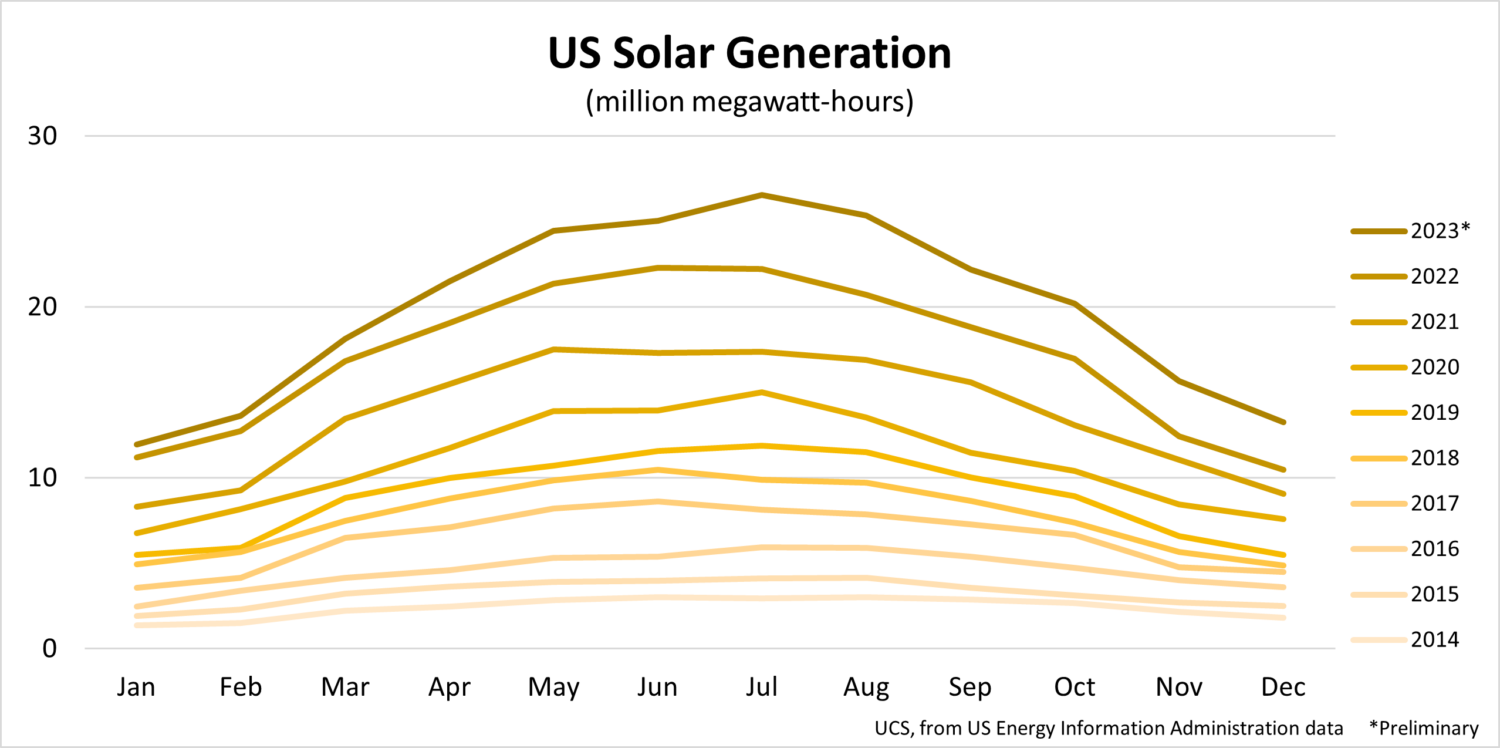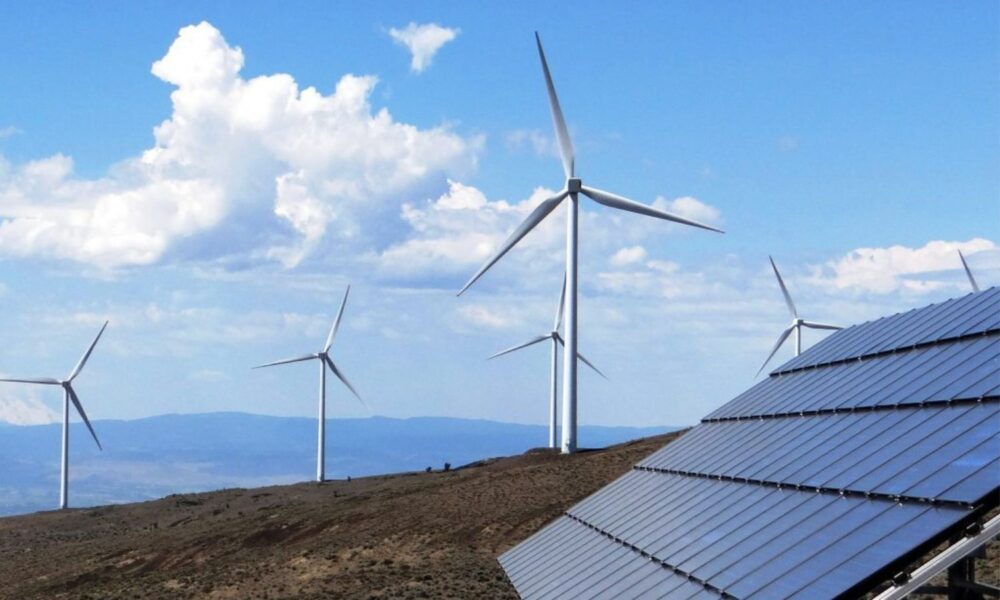When it comes to the transition to clean energy, 2023 was quite a year for progress: record-breaking amounts of solar installed in the United States, a solid drop in carbon emissions from the US power sector, more than one million electric vehicles sold in the country for the first time, “breakneck” growth in renewable energy globally, and more.
But the fact that 2024 is a leap year seems apt for a period in which the US clean energy market seems poised to leap to a whole new level, in exciting and even startling ways. Here are a few predictions about what to expect in the coming year.
Solar will have its biggest year ever
Solar and wind have been clean energy generation superstars for a while now, and 2024 should be no exception. While preliminary year-end data from the US Energy Information Administration (EIA) show solar’s impressive 2023, EIA projects that 2024 will be even bigger for solar installations, with an anticipated 63 percent more than the 2023 tally. That growth would increase total US solar capacity (including rooftop solar) by more than 30 percent. And EIA projects the capacity of wind power, already the largest source of renewable electricity in the country, to grow 4.7 percent.

Solar and wind together will leap past coal
With all that new generating capacity, wind turbines and solar panels will be producing appreciably more electricity than in years past. Solar could generate 41 percent more in 2024 than in 2023, and wind 7 percent more, according to EIA. For wind, that would be two and a half times as much electricity as it produced in the United States in 2014, and would increase its generation to 11 percent of the US supply. For solar, the decade will have brought it from well below one percent of US electricity supply in 2014 to 7.5 percent in 2024 (again, with rooftop solar).
All that points to a watershed moment for solar+wind: EIA says, “We expect solar and wind generation together in 2024 to overtake electric power generation from coal for the first year ever.” In fact, solar and wind could overtake coal by a sizeable margin. Taking small solar into account, solar and wind together could generate almost 30 percent more electricity than coal this year.
Renewables will reach one-quarter of US electricity
The growth in wind and solar also suggests another watershed moment is in the offing for US renewable electricity. While hydroelectric generation depends at least as much as some other renewables on the vagaries of the weather (precipitation and snowpack, in hydro’s case), EIA projects production closer to the long-term hydro average, after a few down years. It also suggests that US geothermal plants may generate at close to their recent average.
Add hydro and geothermal generation to that from wind and solar and you can see another notable milestone in clean energy’s progress: those four renewable energy sources could account for fully one-quarter of US electricity this year, or even a little more. That would be double their contribution of a decade ago. And that progress could set up fossil-fuel generation (chiefly gas and coal) to drop below the 50 percent mark soon after.
US offshore wind will produce a record amount
This one doesn’t exactly involve going out on a limb, but 2024 should mark a notable leap for offshore wind in the United States. The two projects that were under construction at the end of 2023—off the coasts of Long Island and Massachusetts—should reach full power in 2024.
And when they do, they’ll represent a celebration-worthy increase in the number of US offshore wind turbines (from 7 to 81) and offshore wind megawatts (from 42 to 980, given more powerful turbines). Those leaps should get us enough electricity generation to meet the needs of the equivalent of more than a half million Northeast households. And they should pave the way for the many other US offshore wind projects under development.
Through 2024, and beyond
None of this progress is a done deal, and each of the renewable energy technologies faces a lot of headwinds, despite the sector’s many clear benefits. Higher interest rates, for example, hit capital-intensive renewables harder than some other options. Even if things do roll out as projected, EIA projects generation from gas plants—the largest single source of electricity on our grid—will increase in 2024, albeit at an appreciably lower rate than in recent years. Making real—and accelerated—progress is going to take continued action: ramping up the US clean energy workforce and the capacity to manufacture and install solar panels and wind turbines, pushing for ever-stronger state/regional/federal policies to remove barriers and drive efficiency, pushing back on disinformation about all these technologies, and making sure equity is central to the clean energy transition.
But those leaps are also just a taste of the surges and crossover points we can expect in 2024. There’s also plenty more to watch for. Montana, for example, is about to have more installed wind capacity than coal. Energy storage capacity (think batteries) may grow a stunning 80 percent nationally. And, since electrification is also key to our transition, keep an eye on heat pumps, which are now outselling gas furnaces in the United States and are set to keep driving oil and gas out of our homes and businesses.
Clean energy has a lot going for it and has long been well worth serious attention. This leap year should be no exception.

